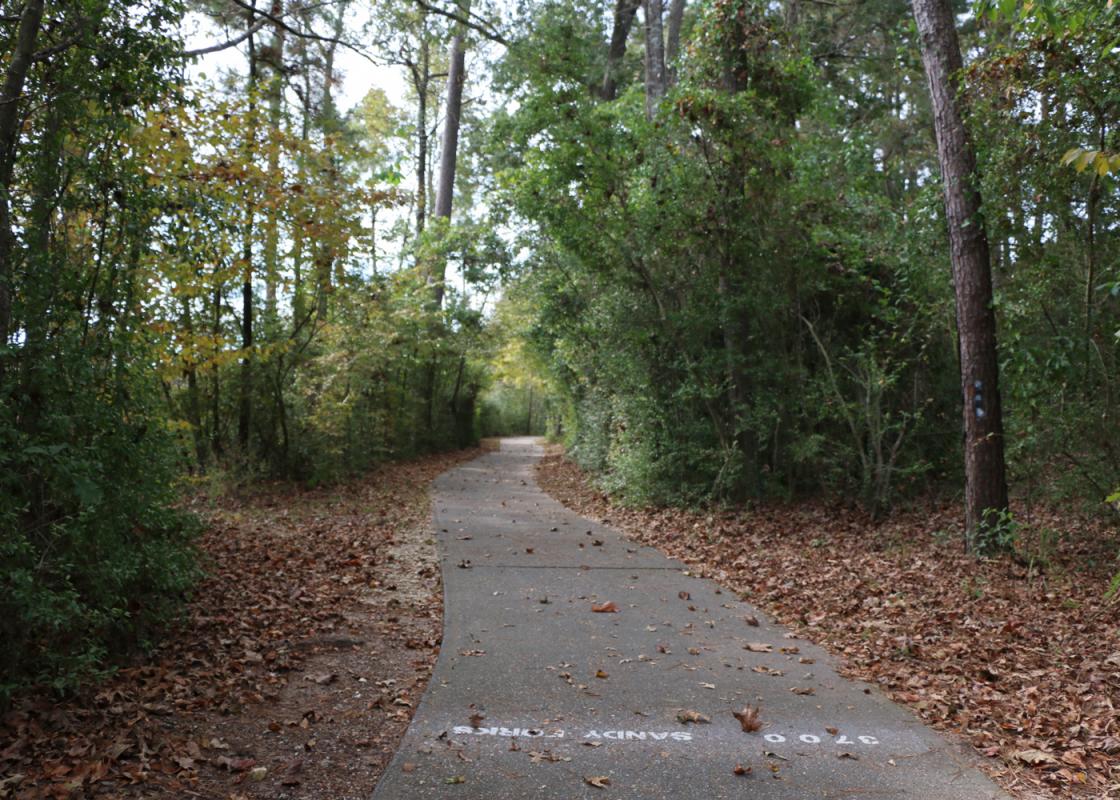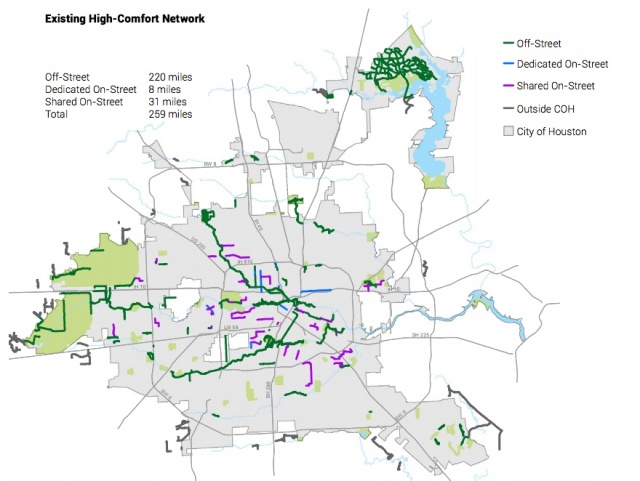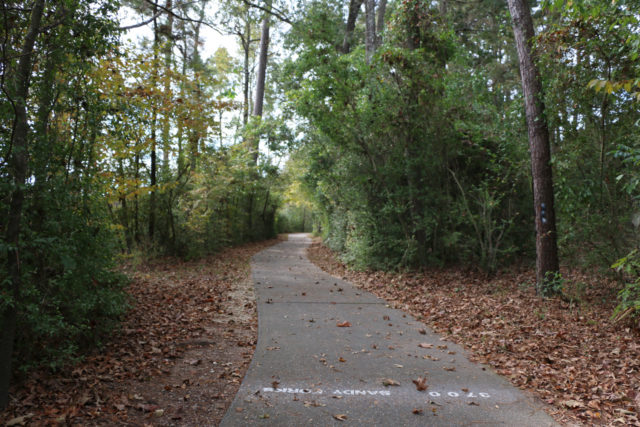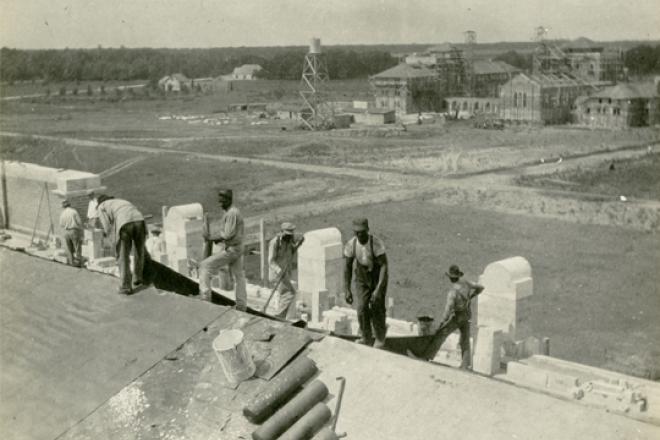Follow OffCite's Synthetic Nature series that supplements the forthcoming issue of Cite (99). Use the hashtag #SyntheticNature to view related content on Twitter, Instagram, and Facebook.
As the Houston Bike Plan inches closer to approval by the city, now might be a good time to review all that it entails. For those who rarely venture outside the Loop, the map might contain a surprise. In the northeast corner of the city is a large green spot, an area so thick with lines it looks more like an inkblot than a network of high-comfort, off-street bike trails.
The Kingwood Greenbelt, as we know it, is composed of paved bike and pedestrian trails that weave throughout forested interstitial spaces behind rows of suburban homes with large lots. All destinations in Kingwood are easily accessible via the Greenbelt, with the crossing of a street at grade only necessary at rare intersections, since there are underpasses under most major thoroughfares. For the young, the trails provide easy access for visiting friends and getting to schools or convenience stores. Adults use them more for jogging, biking, or walking the dog. The Kingwood Park and Ride, located in Kingwood's Town Center and providing bus service to Downtown Houston, is bisected by several sidewalks that feed into the Greenbelt.
Charles Tapley, Houston architect, park designer, and an early advocate for the revitalization of Buffalo Bayou, designed the trails for Kingwood's first neighborhood, Trailwood Village, in the late 1970s. As David Theis writes in Cite 47, the Greenbelt for Tapley "represented a strategy for preserving the natural landscape in the midst of heavily engineered suburbanization." A serene system of trails has grown up along with each additional neighborhood, many running along small creeks, bayous, and drainage ditches, as well as utility corridors that cut between homes and roads --- in Kingwood the Greenbelt is so essential that an ordinary sidewalk is also generally referred to as "a greenbelt."
It's not a bustling transportation conduit, but the Greenbelt serves its dual purposes of connectivity and recreation well. In a lot of ways, it also provides a public space with privacy in a suburban landscape that lacks central gathering spots. Growing up in Kingwood, my friends and I would spend hours after middle school riding back and forth across trails, stopping to throw footballs in a park or sitting on the stoop of a gas station. Later, we would take to the trails at night to try our first tastes of alcohol or use their forested darkness to escape a house party that had been busted by the police. We knew that couples could alight on one of the benches under a shroud of trees to steal a moment of intimacy.
To this day, my favorite part of visiting my parents in Kingwood is going for a walk or run along the trail by our home in the Kings Forest neighborhood, being dumped out upon the small gar-populated lake that the trail winds around. When the adjacent homes are blocked by walls of pines and yaupon, a bayou or drainage ditch meandering nearby, the trails are sometimes utterly wild. With all kinds of wildlife lurking just a few steps off the trails, they allow the suburb to live up to its moniker, "The Livable Forest."
Constructed simultaneously with new homes as opposed to being retroactively installed like the bayou greenways, the Greenbelt offers a functional system that connects people to places, while existing as a beautiful destination on its own merit. It would be interesting to see how such a system, one that weaves throughout neighborhoods connecting townhouses to skyscrapers, parks to dive bars, apartment buildings to schools, could function in an urban context.
Houston's Bike Plan and Bayou Greenways Initiative are huge endeavors that will make the city and nature more accessible by bike, but it's difficult to retrofit a car-centric city that has its back turned on parks and bayou-front property. Allowing bikes to pass through the city more easily is only step one. How do we truly meld greenways and city? Can the Greenbelt serve as a model? If Houston can not only enact the Bike Plan, but evolve with it, we might build something truly novel and at an unprecedented scale --- a kind of Venice of trails lined in palmettos and pine.
Further Reading >>>
"Houston’s Draft Bike Plan Lays Out Ambitious Vision for City’s Future," by Raj Mankad












